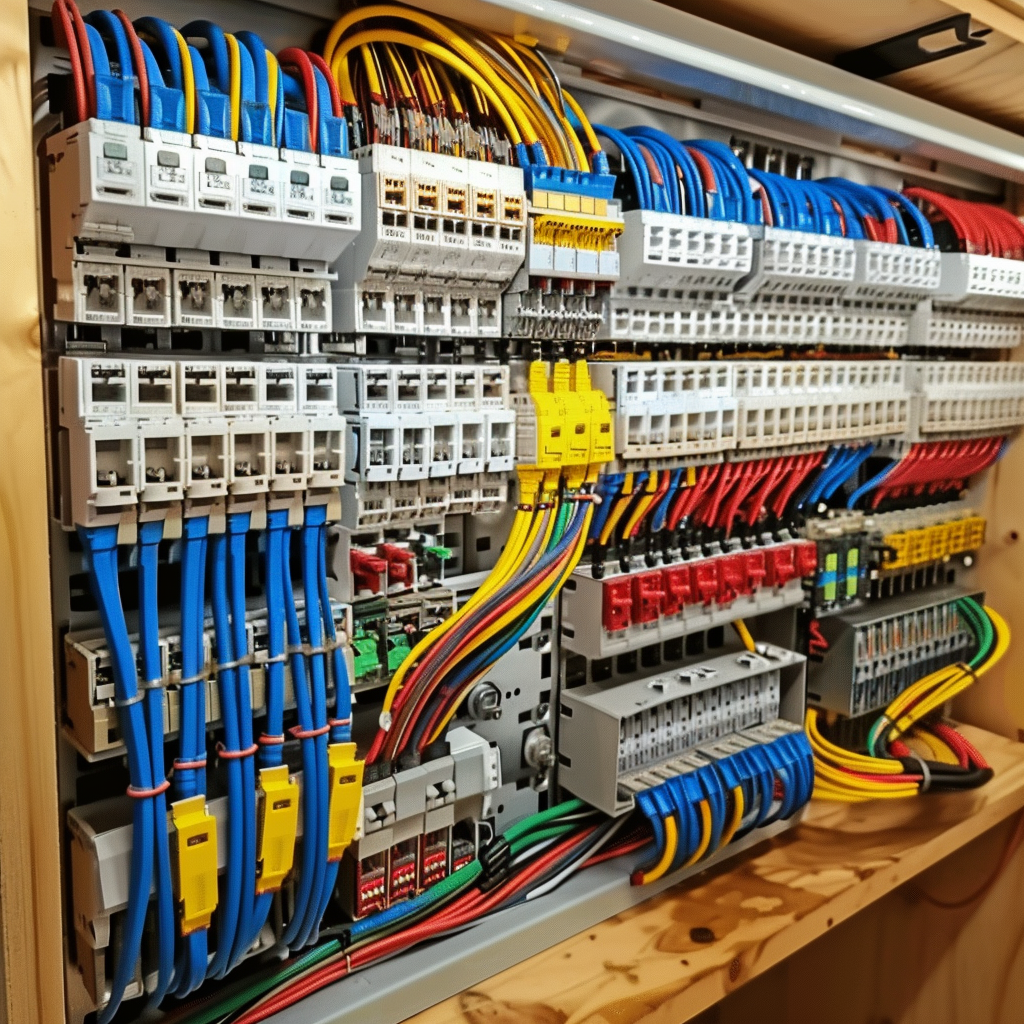The Ultimate Guide to Electrical Setup: Tips and Methods for a Safe and Reliable Home Wiring System
In the realm of home maintenance, couple of facets are as essential yet typically ignored as the electrical wiring system. By exploring the subtleties of electric security procedures and energy-saving methods, this thorough overview will shed light on the details of home electrical wiring, equipping individuals to take charge of their household's electric facilities.
Comprehending Electrical Precaution
To make sure the security of both individuals and residential property, understanding and carrying out proper electrical precaution is critical in any home circuitry job. Electrical power is a powerful pressure that can be harmful if not taken care of with care. One of the basic precaution is ensuring that all electric work is performed by certified professionals that comply with local building ordinance and regulations. It is critical to perform a comprehensive evaluation of the electrical system prior to starting any kind of circuitry job to identify possible risks or issues that need to be dealt with.
Additionally, making use of the appropriate tools and equipment is necessary for keeping safety during electrical setups. Protected handwear covers, voltage testers, and safety glasses are several of the basic safety gear that ought to be used to stop electric shocks or crashes. It is additionally vital to de-energize circuits prior to working with them and to classify all circuits and breakers plainly to stay clear of complication.

Vital Tools for Home Wiring
Ensuring the appropriate application of electrical security actions in home circuitry projects involves utilizing a specific set of vital tools created to assist in the installment procedure properly and securely. Some of the trick devices needed for home wiring projects include a voltage tester for checking online cords, cord strippers for removing insulation from wires, a wire cutter for precisely reducing cords to size, a screwdriver established for safeguarding electric components, electrical tape for insulation and securing connections, a wire ripper for removing cord sheathing, and a multimeter for gauging voltage, existing, and resistance.
Step-by-Step Electric Setup Overview
Starting an electrical installation project requires meticulous preparation and adherence to safety and security guidelines. Prior to beginning any type of job, guarantee you have a comprehensive plan laying out the layout of the electrical system, including the positioning of electrical outlets, buttons, and components. Take into account the power needs of each device to identify the proper cable gauge and breaker sizes.
The primary step in the setup process is to close off the power supply to the area where you will certainly be working. Make use of a voltage tester to verify that the circuits are de-energized before touching any kind of cables. Next, meticulously eliminate existing fixtures or electrical outlets and disconnect the cords.
When setting up brand-new wiring, run wires with wall surfaces and ceilings, protecting them in position with proper fittings. Adhere to local building regulations and manufacturer guidelines for proper cable installation and links. BRE Services. Make certain to label cables for easy recognition and future upkeep

Troubleshooting Common Electrical Wiring Issues
Having completed the installation process as outlined in the previous subtopic, troubleshooting usual circuitry problems is a necessary skill for guaranteeing the safety and capability of your electric system. One typical issue is a stumbled breaker, commonly brought on by overloaded circuits or a short circuit. To fix this, locate the breaker panel, recognize the stumbled breaker by seeking the one not totally in the "on" placement, and reset it by turning it fully to "off" and after that back to "on." Another widespread issue is a malfunctioning outlet, characterized by no power or recurring power supply. Make sure the outlet is not managed by a switch, after that use a voltage tester to look for power. If there is no power, turn off the circuit, evaluate the electrical wiring links for any loosened or broken wires, and replace the outlet if required. Continually flickering lights can suggest loosened wiring links or an overloaded circuit. To resolve this, check and tighten all cable links in the impacted components and switches and redistribute the lots on the circuit to balance the electrical need. On a regular basis inspecting and without delay addressing these typical circuitry issues will keep the safety and effectiveness of your home electric system.
Tips for Energy-saving Electric Systems
For ideal energy performance in electrical systems, executing clever techniques and utilizing energy-saving technologies is vital. One crucial idea for attaining an energy-efficient electrical system is to upgrade to LED lighting. LED bulbs consume considerably less power than typical incandescent bulbs and have a longer life expectancy, making them a cost-effective selection in the future. Additionally, setting up programmable thermostats can assist manage heating and cooling systems, reducing power waste when nobody is home. Another strategy is to spend in energy-efficient home appliances that are ENERGY celebrity accredited, ensuring they fulfill high requirements for energy performance. Appropriate insulation and sealing of home windows, doors, and electric outlets can also prevent power loss, ultimately minimizing the workload on electric systems. Take into consideration integrating renewable energy resources like solar panels to additional decline reliance on typical power grids. By integrating these energy-efficient tips and innovations, property owners can not just save cash on their electrical power costs but additionally decrease their ecological impact.
Final Thought
To conclude, carrying out correct safety steps, utilizing essential tools, complying with a detailed installation BRE Services guide, fixing typical concerns, and including energy-efficient tips are important for a secure and reliable home wiring system. By adhering to these practices, house owners can make certain the longevity and performance of their electric installations. It is necessary to focus on safety and security and efficiency when it comes to electric operate in order to prevent possible threats and to preserve a reputable electric system in the home.